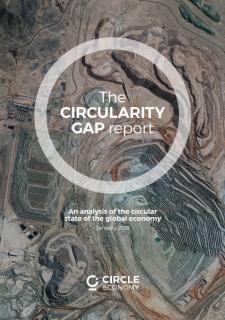
Our world economy is only 9.1% circular, leaving a massive ‘Circularity Gap’. This alarming statistic is the main output of this first Circularity Gap Report, in which we launch a metric for the circular state of the planet. Taking the United Nations’ Emissions Gap Report as inspiration, the Circularity Gap Report provides a framework and fact-base to measure and monitor progress in bridging the gap, year on year. Being able to track and target performance via the Global Circularity Metric will help the global community engage in uniform goal-setting and guide future action in the most impactful way.
The report outlines four steps to take action in bridging the circularity gap:
- Build a global coalition for action, comprised of front-running businesses, governments, NGOs and academics, that will input and convene an authoritative annual report on the circular state of the global economy and measure progress towards its implementation.
- Develop a global target and action agenda by working with all relevant stakeholders to agree clear goal-setting and alignment with the SDGs and emission-reduction targets.
- Translate global targets into local pathways for circular change, taking big-picture directions and interpreting these for nation states, individual sectors, supply chains, regions and cities to embed strategies in their specific context and align with incentives and mandates.
- Improve our understanding of how different levers for circular change affect aspects such as material saving, value retention and climate mitigation. Also consider fully the dynamics of international trade and employment, plus implications for education, training and future skills, both for young people today and the next generations of tomorrow.
